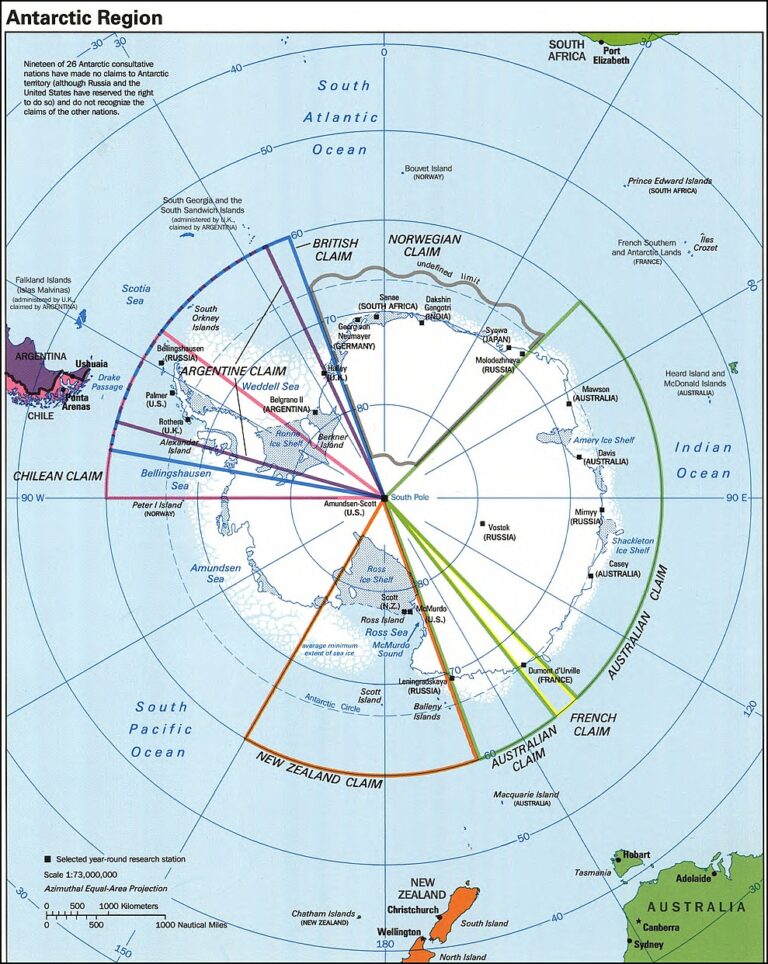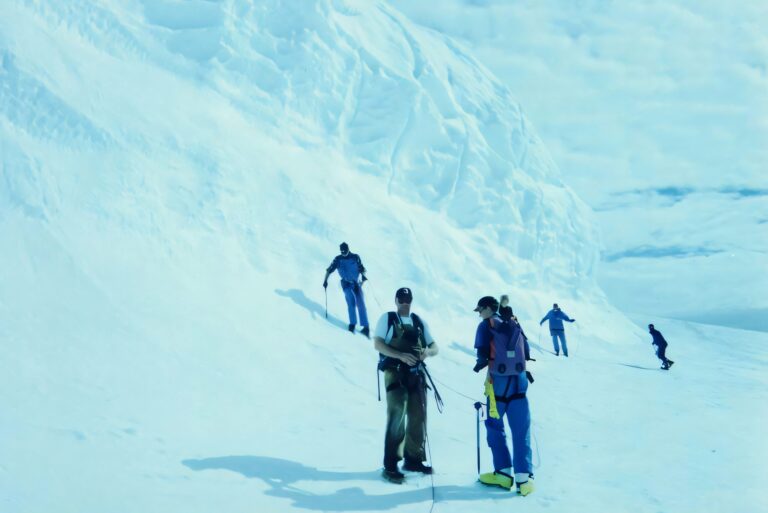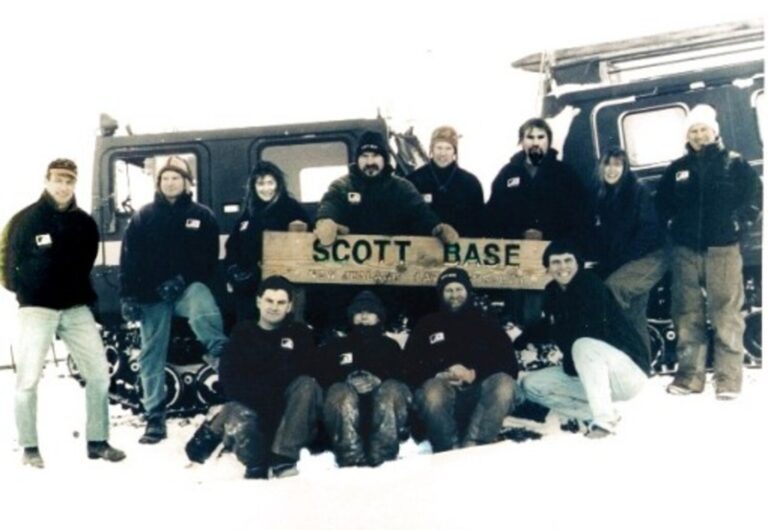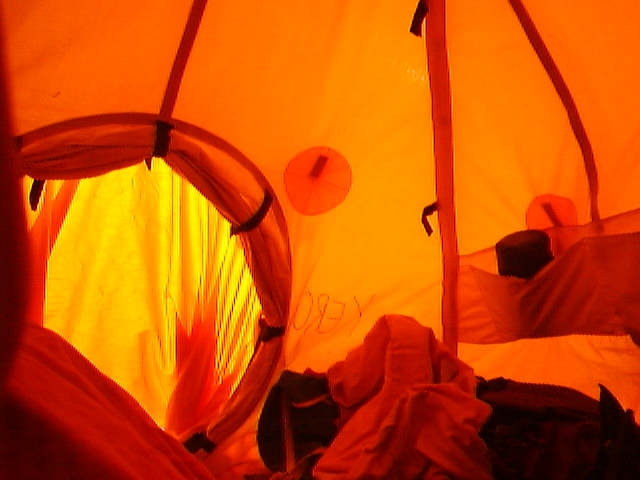
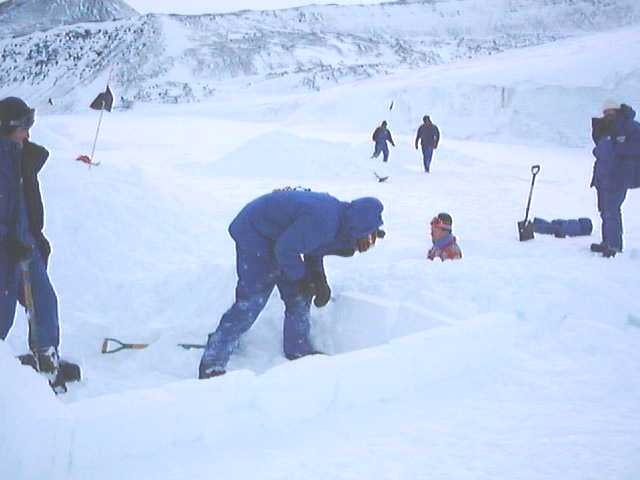
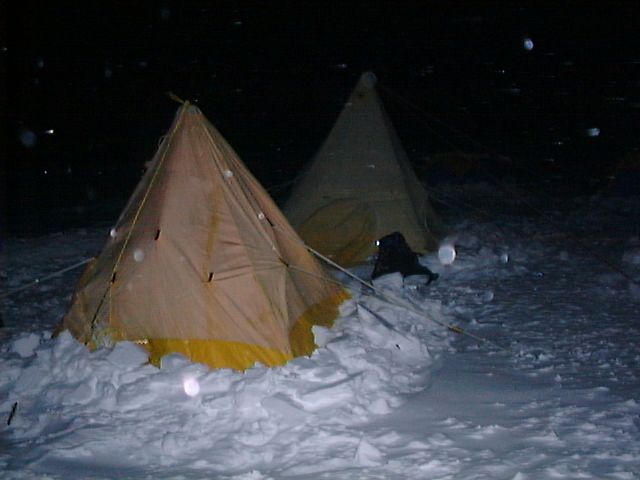
Antarctic Field Training
Scott Base
Introduction
I have to say upfront that this page just may seem like a lot but it only touches fractionally on what gets taught during training. I could write pages and pages about this. If you are interested in knowing more then drop me a line and I will update it with a wider range of information.
Antarctic Field Training (AFT) is done not far from Scott Base (but far enough) and is normally run within a few weeks of a Scott Base person arriving in Antarctica. It’s cold, exhilarating, exasperating, fun and tedious. It is compulsory training like the constant fire drills. Except, you will love the AFT training.
Imagine stepping foot on a vast, frozen landscape where temperatures plummet to bone-chilling depths, and the wind whips across the ice with relentless force. Welcome to Antarctica, a place where survival skills are not just a matter of knowledge but a necessity. In this unforgiving environment, Antarctic Field Training (AFT) becomes a critical component of preparing oneself for the challenges that lie ahead. It is quite the intro, but keep in mind the Scott Base staff generally work in and around a glorified hotel with the caveat that outside of that shell of a building, the weather can be downright inhospitable and will be happy to kill you with the cold if you are not paying attention, even on a good day. Inside the base, the problem is eating too much and putting on a lot of weight. When we go outside of the base any distance, that’s when it gets more interesting, so pay attention.
Essential Skills for Surviving the Antarctic
Antarctic field training covers a wide range of essential skills that enable individuals to navigate and survive in the harsh environment. From learning how to set up camp and construct shelters to understanding the proper use of equipment and safety protocols, each aspect of the training plays a crucial role in ensuring the well-being of those who venture out onto the ice.
As an electrician at Scott Base, I was just one of many trades, science and operational staff involved in keeping a base running. To say that I embarked on a journey that would test my limits is a bit of an overkill. We just needed to be sensible and be careful not to push the limits. Yes, it’s a dangerous place but I could say that of just about anywhere in the world. The Antarctic Field Training (AFT) provided me with the skills needed to thrive in one of the most extreme environments on Earth. Through this blog post, I will take you through just a few of the essential aspects of Antarctic field training, sharing my personal experiences and insights along the way. Who knows, maybe this is or will be, your experience one day as well so take some mental notes along the journey.
The path to becoming an Antarctic employee (not so much an explorer) is not as daunting as it may seem, well not for the normal summer or winter over Scott Base staff. The field training program is designed to accommodate individuals from all backgrounds, and no prior experience is necessary. With the guidance of knowledgeable and experienced instructors, we all went through the process of learning the basic skills required to safely navigate and survive in this unique environment. The intent was to give us enough knowledge to survive the basics and have some fun along the way so the training would be able to sink in a bit easier. Did we all still make a few mistakes along the way? That would be a big affirmative. I had some doozies. Situations where we did not understand the dangerous parts, or simply a lapse in judgement, but we (me) always survived. The rest of the team had experiences and adventures of their own as well but it’s not the done thing to talk about them…nobody talks about them. The AFT people sometimes find out and will provide some corrective advice, as was the case with me once, but often it’s a live-and-learn process. We can do the bloopers in another episode.
Throughout AFT training, you will discover that learning these skills is not only informative but also enjoyable (usually when you have finished shovelling all the snow from one place to another). The instructors create a supportive and engaging atmosphere, ensuring that every participant feels confident and well-prepared for the challenges ahead. By trusting in the expertise of your trainers and embracing the learning process, you will quickly find yourself acquiring the knowledge and abilities needed to thrive in Antarctica should you find yourself in a situation you would need to use them.
So, whether you are planning your own journey to the icy continent or simply curious about what it takes to survive in such an extreme environment, join me as we dive into the world of Antarctic field training. This is just a fraction of the essential skills. However, share a glimpse of the memorable moments I was fortunate enough to encounter and gain a deeper appreciation for the awe-inspiring beauty and challenges of life on the ice.
Polar Tent Setup and Snow Shelter Construction.
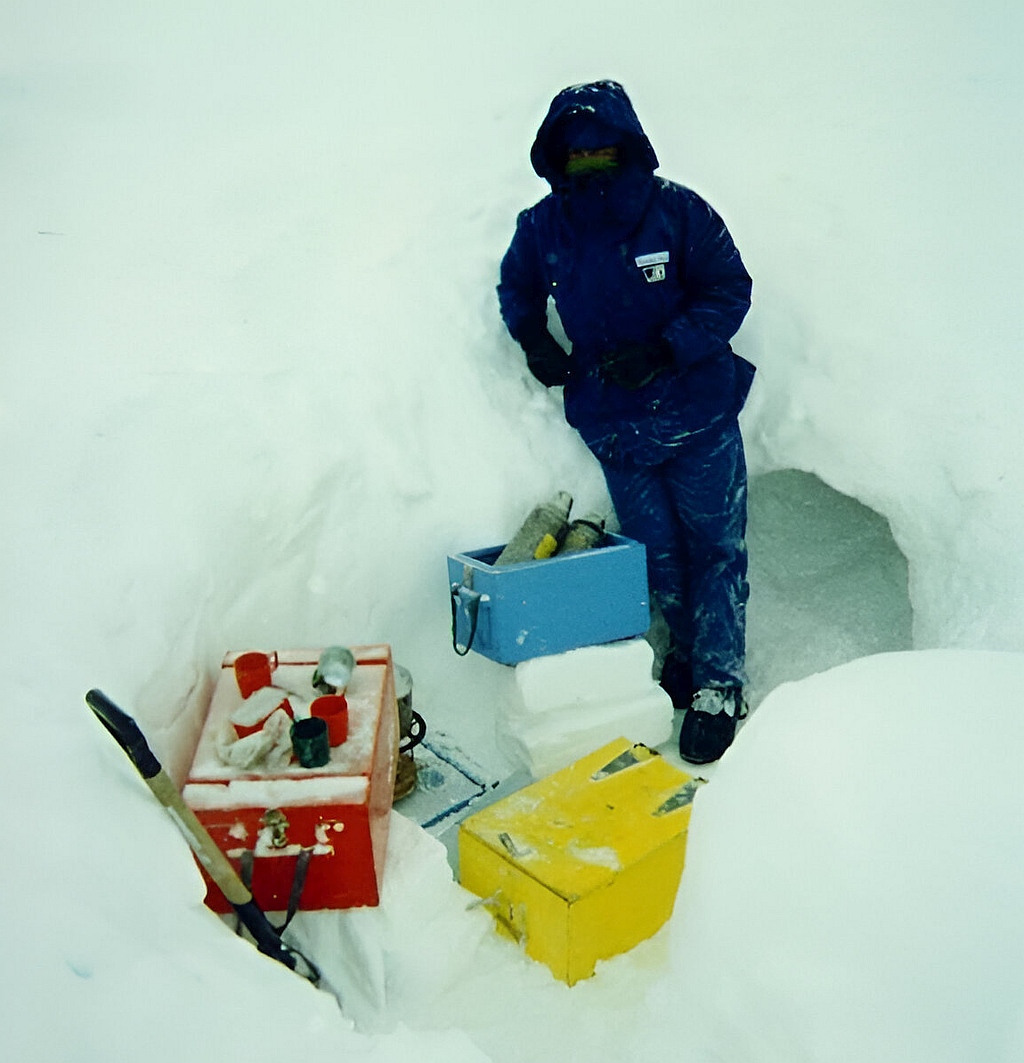
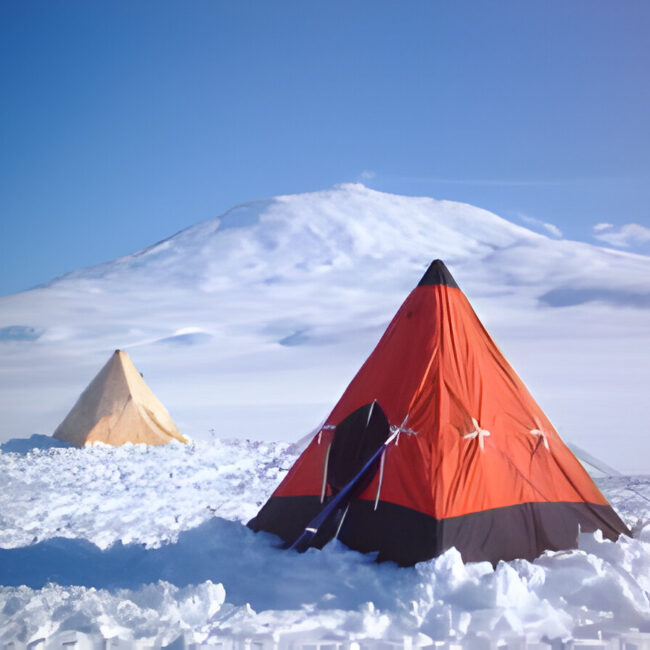
One of the foundational skills taught during Antarctic field training is the proper setup of polar tents. These specialized tents are designed to withstand the strong winds and low temperatures characteristic of the Antarctic environment. Learning how to pitch these tents correctly ensures that you have a reliable shelter to protect you from the elements. There are many diffent types of Arctic and Snow Tents that are a bit more streamlined. These tall triangular ones shown are a rugged type that offfer good headroom and can be brought onsite using a sled, so weight is not realy a problem.
When setting up a polar tent, it’s crucial to pay attention to the small details that can make a big difference in your comfort and safety. One such detail is piling snow around the bottom edges of the tent to prevent the wind from getting underneath. This simple step helps to keep the interior of the tent warmer and the tent more protected from the harsh Antarctic winds that will try to get under the tent and lift it like a resistant balloon in a hurricane.
I also found it weird getting in and out of the tent through the hole in the wall that is above ground level to stop some of that thermal issue and trap a bit more heat. There is nothing elegant about the process of entry and exit for beginners. Just remember to take of your (mini) crampons so you don’t spike the material and rip it to shreds, otherwise, you get unpopular very fast with the AFT team.
Another important consideration when setting up camp is thermal separation from the ground. In the Antarctic, extreme cold can run like a river, and the ground temperature can be several degrees colder than the air just a short distance above it. To mitigate this, it’s advisable to create a bit of elevation between your sleeping area and the ground, if possible. This can be achieved by using foam mats, sleeping pads, or even building a raised platform within your tent or snow shelter.
In addition to tent setup, the training also covers the construction of snow shelters. These structures, such as snow caves and igloos, provide an alternative form of shelter when tents are not viable or in case of emergency. By learning how to efficiently construct these shelters, you gain the ability to create a safe haven even in the most challenging conditions. The lifting of the bed position above the ground becomes even more important as there tends to be more air circulation between the inside and outside in these situations.
During the training, experienced instructors guide you through the process of setting up polar tents and constructing snow shelters. They share tips and techniques to ensure that your shelter is stable, well-insulated, and able to withstand the rigours of the Antarctic weather. By the end of the training, you will feel confident in your ability to create a safe and comfortable living space in the midst of the icy landscape, taking into account factors such as wind protection and thermal separation from the ground.
Don’t be fooled, there is a lot to learn. For example when you are wearing crampons its not as easy as it looks. We had the larger versions but also the smaller versions that fitted into the insole of the boot. Very easy to use and less likely to catch on other clothing. However, as a beginner, you going to find yourself constantly standing on the guide ropes with your crampons. It is as if the expensive rope and your sharp-edged crampons are magnetically drawn to each other in a doomed attraction. With time you will learn to walk like an adult and not step on the rope which the AFT instructors will very much appreciate.
I could go on a little about the ice axe training but I was ok with those and enjoyed self-arresting down a slippery ice slope which is what was being practised in the picture below with Steve and Chris.
Sleeping in tents and snow caves and going to the toilet all became more tolerable with time. Cooking was never my strong skillset and there always seemed to be someone begging me to cook more than I was willing to resist. It was a win-win… nobody starved or got food poisoning. We did lots of different stuff that you don’t expect, like playing rugby to get everyone warmed up at the end of the first day. Learning to check ice depths with long drills and how to traverse Hagglands across sea ice cracks and snow crevasses.
When you get out into the field on AFT training for the first time you quickly find out who smokes and who is a vegan. And by that I mean the smokers became very cold very fast and struggled with heat retention (normally) especially if they were of a smaller frame size. The vegans simply ran out of energy as the keto state they tend to run in struggles to keep up with energy conversion over longer periods. It often means they start to crave large quantities of protein from meat sources to keep their energy levels up for longer. To be honest it also depends if they are consuming a clean or dirty vegan diet and by that I mean a lot of junk food will keep up the carbohydrates but it often has very little staying power. Many a devout clean vegan has willingly succumbed to the Scott Base cooks Bainmaree’s full of meats and naughty treats. Out in the AFT training environment is no different. You need your strength so the instructors make sure everyone is well-fed.
Remember that Smoking and Vegan diets will not do you any favours on the ice. Vaping was never a thing back then but if you are vaping now then you’re an idiot if you think it will do your lungs any good in an icy environment.
Navigating Crevasse Fields and Crevasse Rescue Techniques
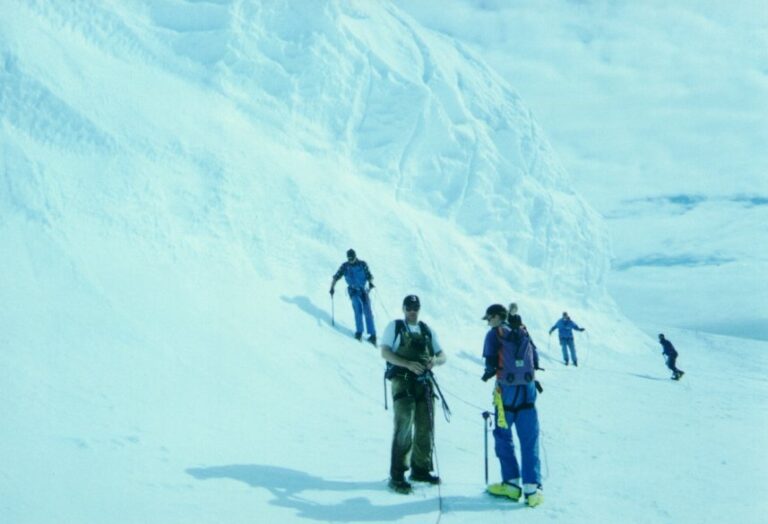
One of the most significant hazards in the Antarctic environment is the presence of crevasses. These deep, often hidden cracks in the ice can pose a danger to those traversing the landscape. During Antarctic field training, a substantial amount of time is dedicated to teaching participants how to safely navigate crevasse fields and perform crevasse rescue techniques. It looks like Chris was not feeling the cold that day. Trust me when I say the temperature was about -20 but very low humidity and lots of sunshine so thermal radiation from the sun kept up with heat loss from the skin. If the wind got up a bit he would be racing for warmer clothing very quickly.
Crevasses form when the deep snow and ice on a hillside or glacier begin to move and crack under its weight. These cracks can be hidden beneath thin snow bridges, making them difficult to detect and avoid. Learning how to identify potential crevasse areas and navigate around them is a critical skill for anyone venturing out onto the Antarctic ice.
It’s important to note that crevasses are ubiquitous in Antarctica due to the constant shifting and movement of the ice. In most cases, these crevasses remain hidden from view, as the snow and ice bridges spanning them remain intact. However, this does not diminish the danger they pose. Experienced field staff take great care to identify and flag safe travel routes at the beginning of each season, and it is crucial that all personnel stay within these flagged areas to minimize the risk of encountering a hidden crevasse. Complacency can be deadly in the Antarctic environment, and maintaining a constant state of vigilance is essential.
During the training, experienced instructors teach you how to use various techniques and equipment to safely navigate crevasse fields. This includes the use of ropes and harnesses to create a safety system, as well as the proper use of probes to detect hidden crevasses. By learning these techniques, you gain the confidence to traverse the Antarctic landscape while minimizing the risk of falling into a crevasse.
It’s important to note that falling into a crevasse does not always result in immediate death from the fall itself. Crevasses often narrow towards the bottom, forming a wedge-like shape. This means that a person who falls into a crevasse may become stuck in the narrowing space, rather than falling all the way to the bottom. However, this situation can be just as dangerous, as the person may begin to melt into the ice due to their body heat and then refreeze, becoming trapped between the walls of the crevasse. Even with the best rescue attempts, extracting a person from such a position can be extremely challenging, and time is often limited due to the cold temperatures and difficulty of access.
In the event of a crevasse fall, it’s crucial to make yourself as big as possible during the fall to reduce the chances of becoming wedged in the narrowing space. If you have the necessary gear, such as ice axes and a rope, attempting to climb out of the crevasse on your own may be possible. However, if self-rescue is not an option, the options for person retrieval can be very limited. One of the methods in a confined space to extract a person from a crevasse if they are wedged or unconscious is for the rescue team to lower a rope from both sides with a magnet clip on the bottom side and then pull up enough of the rope to get both sides of a single rope and attempt to lift them out. This process can be complicated and if they are that tightly wedged the chance of them being warm enough to melt into the ice is high and retrieval is a race to get them out before hypothermia and they never wake up.
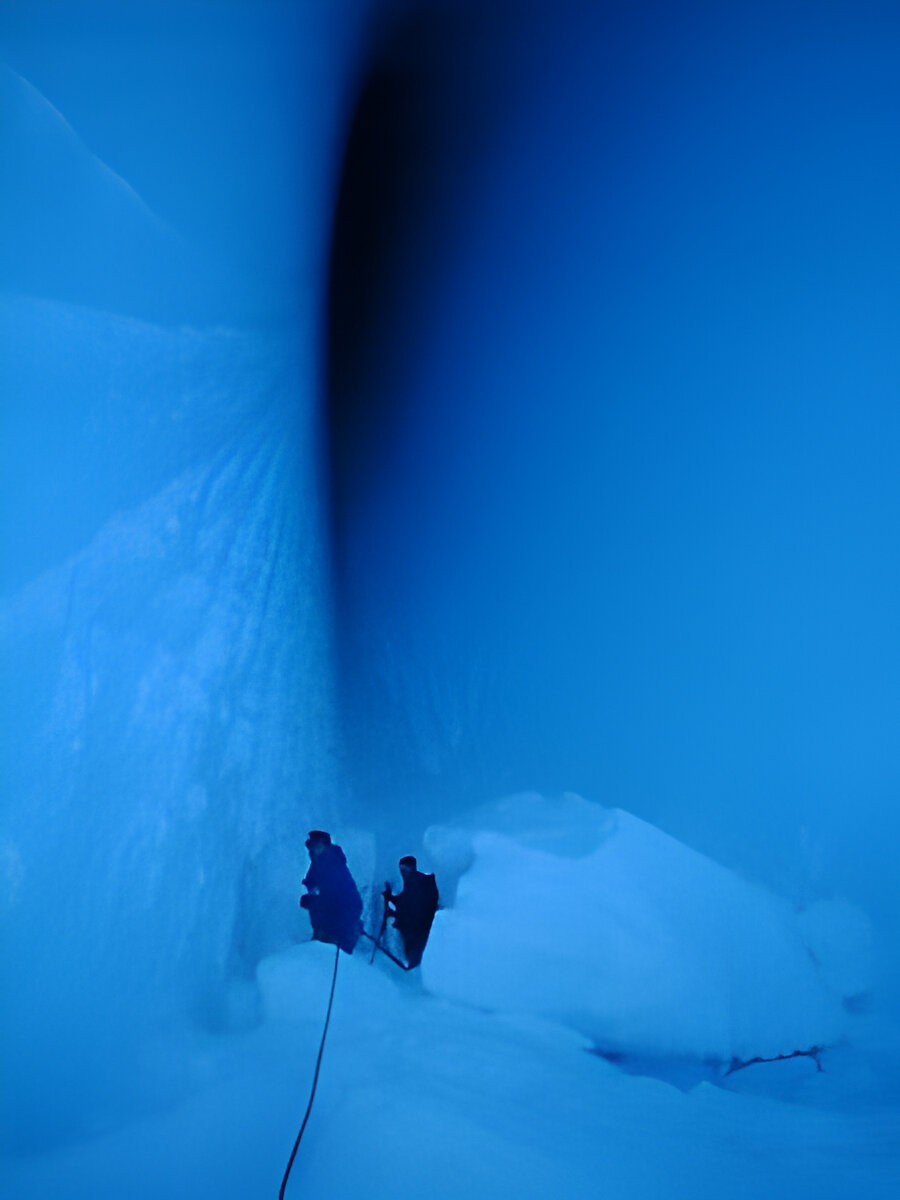
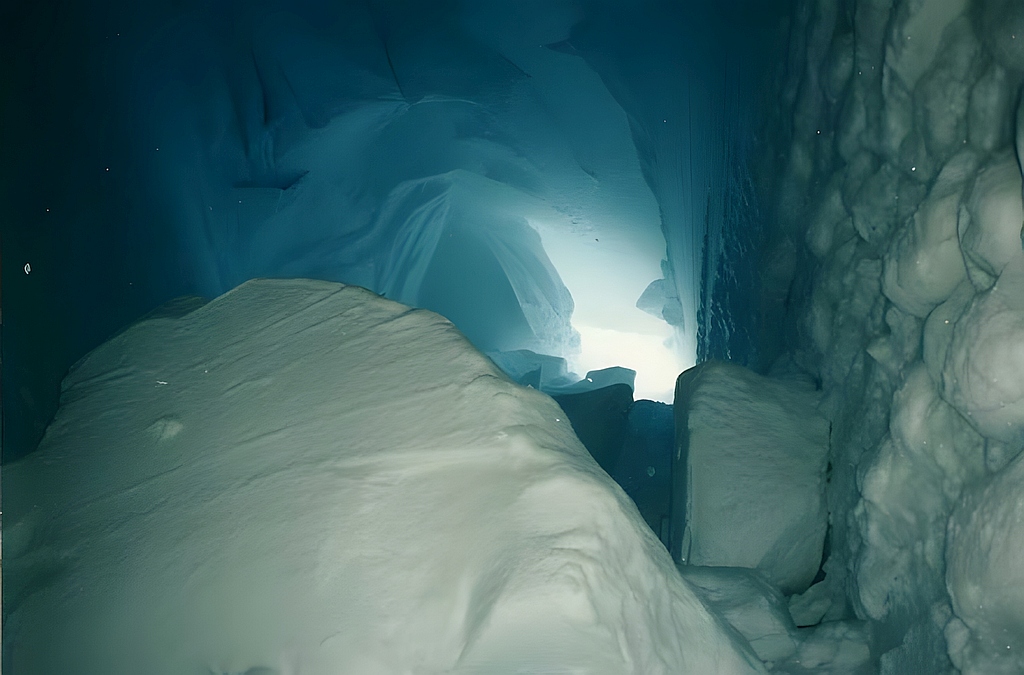
In this photograph, Dave and Steve are descending into the depths of a breathtaking open-ended crevasse. We all get down there eventually and although the camera flash makes it look bright and green/white I can assure you the only light you get here is an insanely crispy blue. The sheer scale and deep bone-chilling temperature of the environment are awe-inspiring. The blue light disappears into the darkness, distorting your perception of depth.
Imagine the terrifying plunge if one were to fall through the surface into this chasm. We had traversed above this very spot earlier with our snowmobiles and sleds, oblivious to the hidden danger beneath although our instructors were well aware of what was below us. Steve and Dave tread cautiously down into this treacherous landscape of ice boulders and snow. The true bottom of this colossal crevasse, I am told, could lie far deeper within a narrow wedge.
The training is done at the tail end of winter when it is coldest and the ice is locked in solidly. This same trip would not be done in summer. The end of summer brings a heightened risk, as more ice boulders detach from the roof and plummet to the depths where Steve is currently walking. It’s a sobering reminder that we often travel unknowingly over these hidden crevasses, and only a catastrophic breakthrough reveals their existence.
Essential survival skills are taught in this unforgiving environment. Staying on the marked flag path, informing others of your whereabouts, and avoiding falls into crevasses are desirable outcomes that management tries to instil in the staff and others. Should you find yourself in a perilous crevasse situation and survive the initial impact, having access to a rope and knowing how to use it becomes crucial.
One of the most valuable skills taught in crevasse rescue training is the use of Prusik knots. These specialized knots, when tied correctly, enable a person to ascend a rope using a short length of rope wrapped around their hand and the escape rope. The simple knots grip the ascending rope, providing traction for pulling oneself upwards using feet and hands alternatively. They lock under body weight and release slightly when unloaded, allowing for incremental upward movement. It’s similar to inching your way up a rope like a caterpillar.
Learning how to tie and utilize Prusik knots is a life-saving skill in crevasse rescue scenarios. However, the apparent simplicity of the technique can be deceiving when faced with a real-life challenge.
Throughout the training, participants engage in practical exercises in a controlled setting, under the supervision of seasoned instructors. By the end of the program, they acquire a foundational understanding of crevasse field navigation, rescue procedures, and the inherent risks involved.

